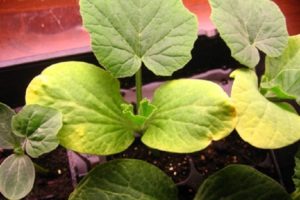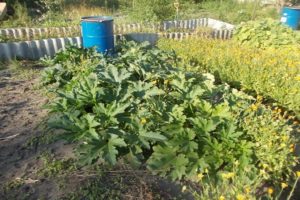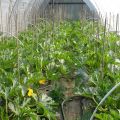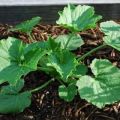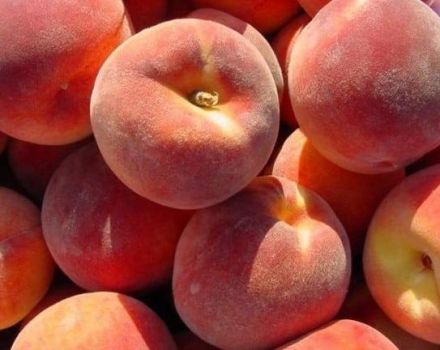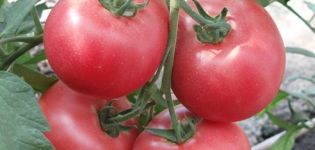Is it possible to plant zucchini in open ground in August and July?
Previously, zucchini was most often grown in Mexico, as they took root well in climatic conditions. However, today this vegetable is grown by almost all vegetable growers in any part of the planet. Many are interested in whether it is possible to plant zucchini in July and collect a high-quality crop. Some argue that this can be done, since in July there are excellent conditions for planting and the temperature is above 15 degrees Celsius. Others believe that by planting a vegetable in the summer, it will not be possible to get a high-quality crop from zucchini.
Zucchini in the open field: when to plant?
To figure out when is the best time to process and plant zucchini, you should familiarize yourself with the lunar calendar. At the same time, it is necessary to check the dates on the calendar every year, since they are shifted annually.
First, the most suitable period for planting the seed is determined in order to obtain seedlings. The quality of the future harvest will depend on the correctly chosen time for planting seeds. Zucchini seeds are planted from the second half of February to the end of spring. When choosing a more accurate time, the peculiarities of the climate in which the plant will be grown are taken into account. For example, if you plant zucchini in May, then in July they will grow and they can be transplanted into the ground.
In February, seed is planted only if the vegetable is grown in greenhouse conditions. Although this plant is unpretentious, it should not be planted outside in early spring. Young seedlings will not cope with the night temperature drop and will die.
Having determined the period of planting zucchini for seedlings, you should choose a suitable time for transplanting the plant into open ground. This takes into account that the plant is planted in a well-warmed ground with a temperature of about 10-15 degrees. Therefore, you should not plant seedlings in early spring. It is better to wait until the end of the spring frost and only then plant the vegetables.

Can you plant zucchini in July? Definitely possible, since in the middle of summer the earth warms up well and the plant will immediately take over after transplanting. Favorable days for disembarkation are 3, 5, 7 and 31. It is not advised to plant zucchini in August, as it is too late. Plants planted at the end of summer do not always have time to fully mature by the beginning of the first frost.
Zucchini varieties that can be planted late
Before you start planting, you should determine what zucchini can be planted in the second half of summer. There are several varieties that are often planted in the ground in summer.
Cavili F1
In July, such a variety can be planted in open ground zucchini like Cavili F1... This vegetable ripens quickly and can therefore be planted late. The advantages of the variety include its yield and fruiting duration, which does not exceed two months. This allows harvesting ripe fruits before frost. About ten kilograms of zucchini are collected from the bush.
Iskander F1
This variety is considered by some to be unique, since it has excellent protection against many vegetable diseases and high yields. The first fruits ripen 40 days after transplanting seedlings into open ground. The weight of each ripe zucchini is 500-600 grams. Thanks to this, 15 kilograms of harvest are obtained from one bush.
Tsukesha
The universal varieties of zucchini include a variety named Tsukesha. It is suitable for early and late plantings, as it is resistant to night temperature extremes. Some sit this zucchini variety seeds in July, in order to harvest a fresh crop by the second half of autumn. Ripe fruits weigh more than a kilogram and are 35–40 cm long.
Karisma
To plant zucchini in July, Karisma is often chosen. Its fruits fully ripen within a month, making it possible to harvest in early autumn. The plant grows well in the open field, as it is resistant to diseases and pests. Also, Karisma bushes cope well with low temperatures.
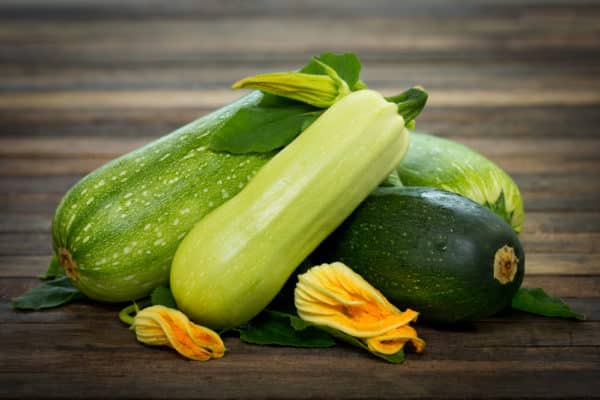
How to plant zucchini with seeds and seedlings?
There are two ways to plant vegetables - seedlings or seeds. When determining the appropriate method, the climatic features of the area and how quickly the fruits need to be harvested are taken into account. For example, if you need to harvest quickly, you will have to immediately plant the seed in the soil.
Seedlings
Zucchini is often grown by the seedling method, as it is the most effective. When planting in this way, the seed is first sown in small pots. It is better to use peat containers to make it easier to transplant seedlings into the garden.
Before planting, a soil mixture is added to each planting container, consisting of two parts of compost with ash and part of sawdust. Some add superphosphate or potassium sulfate to seedlings to help the vegetable grow faster.
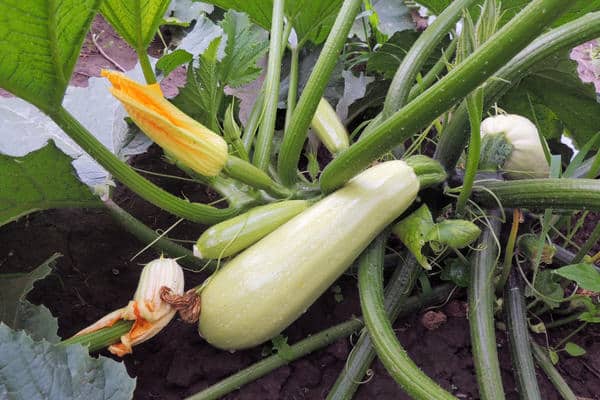
During planting, small depressions about 4-6 cm in size are made in containers, into which seeds will be planted. When all the seed is planted, the planted seed pots are transferred to a lighted room.
After 2-3 weeks, the seedlings are transplanted into open ground. Some are interested in whether it is possible to deeply bury and bury zucchini seedlings?
It is recommended to place only the root system of the plant in the soil, and leave the stem above the soil surface.
Seeds
It is recommended that you familiarize yourself in advance on how to plant marrow seeds in open ground. First, prepare the soil at the site for planting a plant. Before planting, the earth is dug up and fertilized with mineral dressings. It is recommended to feed the site with fertilizers heated to 35-50 degrees.
Many people advise planting seed 2-3 times at weekly intervals. This will allow you to collect ripe fruits for longer in the future. When planting, be sure to adhere to the zucchini planting scheme. The seed is planted in holes at a distance of 40–50 cm. After planting all the marrows, the holes are filled with soil and watered with heated water.
How to care for july squash?
To reap a good harvest, you should properly care for the planted squash bushes.
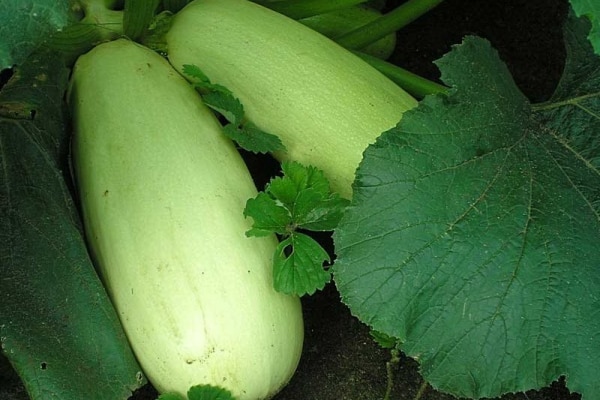
Watering
When growing zucchini in open ground, the bushes must be watered.To do this, use only warm water, since it is she who will keep the root system from premature decay. Each bush consumes about 5-7 liters of water. In the summer, watering is carried out daily so that the earth is constantly moistened. In cloudy weather, the number of waterings is reduced to 2-3 times a week. Plants are also less frequently watered if grown in greenhouses.
With this growing method, frequent soil moisture leads to root rot.
Top dressing
The grown squash must be periodically fed with organic or mineral fertilizers. It is recommended to apply top dressing weekly to get the maximum amount of ripe fruits. If this is not possible, then the bushes are fertilized at least twice. The first feeding is carried out during the flowering of the bushes. 60 grams of superphosphate, 10 liters of purified water and 40 grams of potassium nitrate are added to the soil.
The next time, fertilizers are added to the soil after the first harvest of ripe fruits. In this case, the same mixture is used as for the first fertilization. You can also add manure and compost fertilizers to the site so that in the future you do not have to use additional fertilizers.
When is the squash planted in July harvested?
Every vegetable grower should know when and how to harvest the grown zucchini so that they do not suffer from the first night frosts. Harvesting the fruits is done two weeks after the completion of flowering bushes. Some extend the harvest time to three weeks in order to accurately harvest the ripe fruit.
When harvesting zucchini, pay attention to their ripeness level. To determine the maturity of the fruits, their dimensions are carefully studied. Ripe zucchini is 7–8 cm thick and about 10–15 cm long. Ripeness is also determined by touch. If a dull sound is heard when tapping, and the surface of the vegetable is hard, then the fruit is fully ripe.
Some people want to harvest early and therefore are interested in whether it is possible to harvest zucchini planted in late July, in the first half of September. It is better not to do this so early, as the fruits will not have time to ripen.

Conclusion
Many vegetable growers plant squash in July to harvest fresh crops in the fall. Before planting a vegetable, it is recommended that you familiarize yourself with the features of its planting and caring for the planted bushes.
